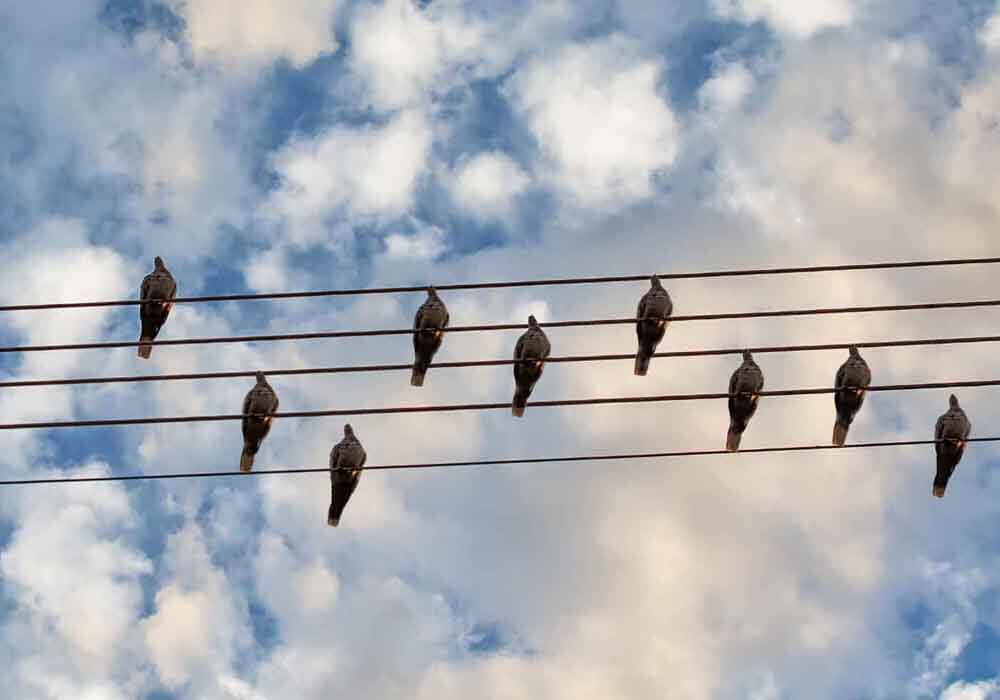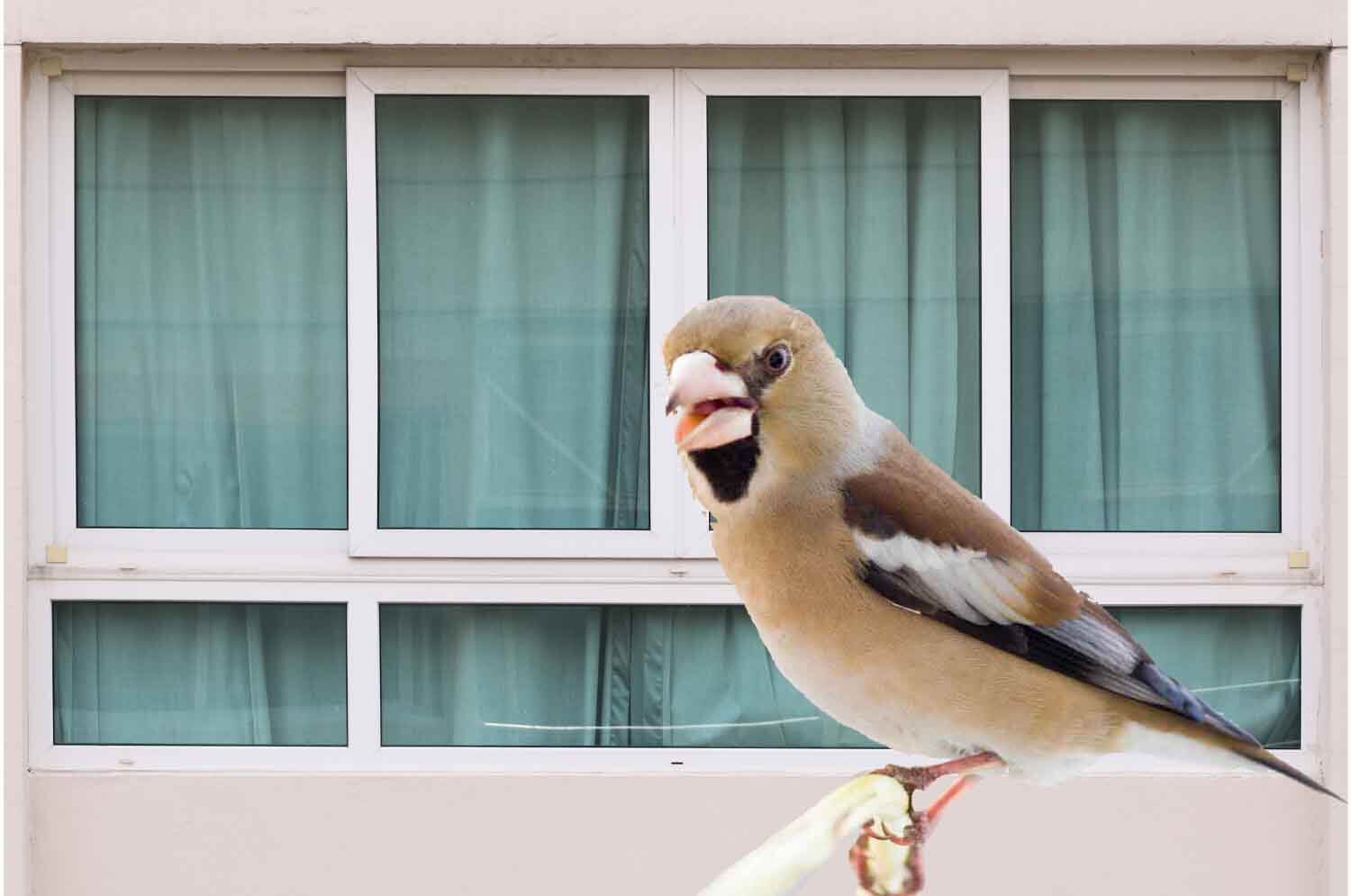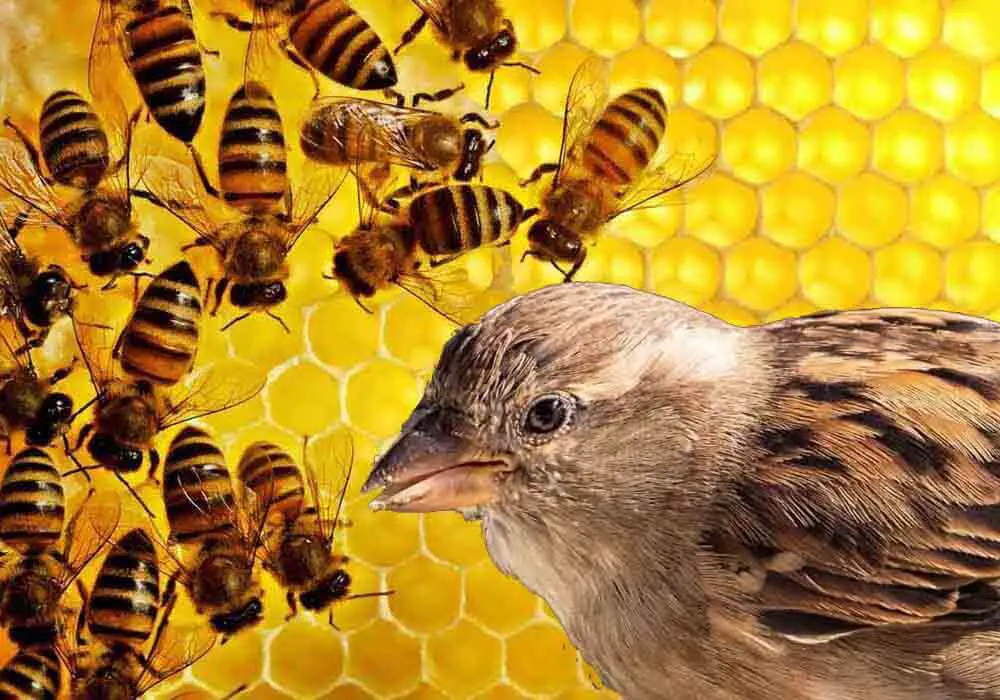How Do Birds Land on Power Lines and Not Get Shocked?
You’ve probably heard that you should never touch power lines because they could shock you. So, how do birds land on power lines and not get shocked?
Birds can land on power lines without getting shocked since they don’t make contact with the ground. The electrical current traveling through the lines won’t pass through the bird unless it touches something grounded. The bird isn’t shocked since it doesn’t make a complete circuit.
Let’s explore how birds can land on power lines and not get shocked and the ins and outs of how these feathered friends can perch on these powerful lines safely.

Why Don’t Power Lines Shock Birds?
Power lines aren’t insulated, making them extremely dangerous for a person to touch. However, you probably see birds always landing on them without getting shocked. So, why is it different for them?
When a bird sits on a power line, they aren’t touching anything else, so the electricity remains in the line. Since the power stays in place, the bird doesn’t get shocked. In other words, there must be a circuit for electricity to pass through the bird.
However, it is still possible for birds to get zapped if they touch two power lines at once since doing so makes a circuit. It can also happen if the bird connects with something else grounded because the electricity will travel through the bird to make its way to the ground.
How Birds Can Safely Rest on Power Lines
Birds resting on power lines only put their two feet on the wire. According to Khan Academy, the bird’s feet have the same electrical potential—the energy needed to move a charge outside an electric field.
So, the power doesn’t move from the line to the bird, instead continuing through the wire safely. Although, that doesn’t mean there’s no electricity interacting with the bird.
The voltage level of a bird sitting on a power line changes as the voltage traveling through the wire does. While the bird might have some electricity passing through its body, it’s still not enough to hurt it. Without a circuit, the amount of electricity that makes contact with the bird is minimal.
Electricity constantly searches for the best conductor. In the case of birds and a copper power line, it’s almost always going to choose to continue through the wire. It’ll only pick the bird if something changes—like the bird becomes grounded or makes a circuit.
Overall, most small birds can safely rest on power lines leading many people to wonder, “How do birds land on power lines and not get shocked?”Larger birds, such as owls or eagles, have a higher risk of being shocked, which might be why we never see them resting there.
Why Large Birds Have a Higher Risk of Shock
Larger birds are more likely to get a shock than small ones. This increased vulnerability could be because of their larger wingspan since it’s easier for them to touch another wire— creating a circuit accidentally.
Big birds also might pull more power into their bodies than small birds, which makes them feel uncomfortable—causing them to fly away. They could get a more severe shock if they’re large enough.
How Many Birds Get Electrocuted on Power Lines?
About 11.6 million birds get electrocuted from power lines each year. Raptors are much more at risk due to their larger wings and feet. If they get too close, electricity can arc out of the lines at them, causing the bird to fall.
Even though large birds might sense the electricity, they sometimes get too close, which can be fatal. They usually die when they fall to the ground if they don’t from the initial shock.
With growing raptor populations, it’s becoming more common for large birds to get electrocuted from these lines. Currently, it’s the lead cause of death or injury for raptors, including bald eagles. That said, it’s not a problem for most small birds you’d see in your neighborhood.
Why Birds Like To Rest on Power Lines
You might notice birds stopping at nearby power lines all day and wonder what makes the wires such an attractive place for them to rest.
There are a few simple reasons they love power lines, including:
- It’s a safe place from predators: Power lines are incredibly high in the air—so predators can’t reach the birds resting there.
- It’s warm: Power lines are also at a higher temperature than the surrounding air due to the current of electricity running through them. The slight heat can attract birds during the colder months.
- It’s a good gathering spot: Power lines allow birds to rest together, making them great sites to huddle for warmth or meet to prepare for migration.
In short, power lines are very appealing to birds. They’re about the same height as large trees, offer plenty of perching space, and can even offer some warmth.
What Bird Species Like Power Lines the Most?
Some bird species enjoy power lines more than others. The ones you see on them the most often are songbirds since they’re smaller and enjoy gathering in social groups. There’s more than enough room for an entire flock on a single power line, so they choose the lines as a meeting place.
These are some of the birds you can see on power lines, although the list can vary depending on where you live:
- Kestrels
- Robin
- Bluebirds
- Cardinals
- Starlings
- House finches
- Mourning doves
- Red-winged blackbirds
- Rock pigeons
- Swallows
- Blackbirds
More bird species will also choose power lines in city areas because there aren’t any trees for shelter.
How Do Birds Land on Power Lines and Not Get Shocked
...Final Thoughts
To summarize, the answer to “how do birds land on power lines and not get shocked?” is that the birds aren’t creating an entire circuit. The power will continue to flow through the wire for the most part. A bird can feel some electricity, but it’s not nearly enough to shock it.
Of course, we can say the same for a human who touches a power line! You’ll want to stay far away from any since they’re not insulated.
Back To The TOP Of This How Do
Birds Land On Power Lines
And Not Get Shocked Page

About the Author...
Richard Worden, a dedicated bird lover for over 20 years, I love to share my in-depth knowledge and passion for birds. Read more About Me and my expertise in this field.
- We Know Birds HOME ›
- Bird Facts and Information ›
- How Do Birds Land On Power Lines and Not Get Shocked?



